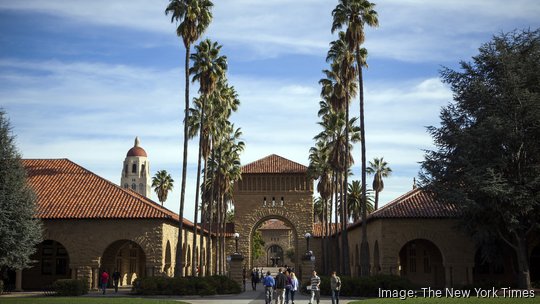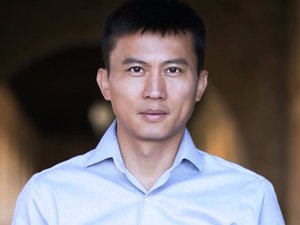
Standford University has launched a $17 million fund aimed at connecting the school's inventors and innovators with potential investors, startups and industry leaders.
Announced by the school's Office of Technology Licensing (OTL) last week, the High Impact Technology Fund is designed to help students, researchers, professors and other members of the campus community take technologies they've developed at the university to market. Innovators selected by the fund will get monetary grants, access to personalized teams of advisers and introductions to potential customers and partners.
Stanford decided to create the fund, which will award recipients up to $250,000 a piece, after noticing that it was taking longer than expected for inventions made at the university to reach the broader public, Nitin Parekh, who is heading up the initiative, told the Business Journal.
The university's role is "to really help these innovators identify the best path forward ... to walk with them down this journey of commercialization, this journey of entrepreneurship through this one critical step and provide them with the skills and tools that they need to be successful further down the road," Parekh said.
Innovators at Stanford already have access to lots of resources, Parekh noted. There are labs and equipment. There's space and materials to do resources and build prototypes, he said. So, unlike the typical startup, the companies those innovators create don't necessarily need a lot of up-front money for research and development.
Instead, what they need is help creating basic businesses around their innovations that can attract outside investors.
"What we're trying to do is de-risk the last few things that are going to bring investors in, so you don't need as much money to do that," Parekh said. He continued: "The amount of money that we put in is really what's needed to access the larger chunks of money to actually create a regular, full-blown company."
HIT is already accepting applications
Stanford piloted the idea for High Impact Technology Fund, or HIT, last year, bringing on Parekh and program manager Laura Clark Murray to oversee it. Last year, the fund selected 13 innovations, which ranged from a technology aimed at creating immersive virtual acoustic spaces to a wearable device designed to offer pain relief to people with osteoarthritis in their knees. Three of last year's recipients have already formed companies and garnered attention from venture capitalist and industry leaders, according to Parekh.
Now that Stanford has decided to make the fund a full-fledged program, the initiative plans to select 10 to 20 projects a year, Parekh said. Each one must be led by a university faculty member, he said.
For this year's batch, HIT started accepting applications earlier this month and will continue to do so until mid-July. A committee comprised of MBA students, faculty, industry leaders, OTL staff and Parekh will pick this year's group of fund recipients. HIT will announce its selections in September and begin distributing funds to this year's batch the next month.
The fund will dole out money to program participants as they hit certain milestones; its funding is expected to last a year.
HIT isn't an entirely altruistic endeavor. Stanford generally considers that it owns any inventions made by university employees during their work at the school, particularly if they use its resources in developing their ideas. As such, HIT requires that all participants in its program disclose their innovations and intellectual property to OTL.
As part of the HIT program, Stanford will license the innovations to startups that are created out of it or to established businesses that buy those inventions, Parekh said. Stanford also has the right to take an equity stake in any companies that are launched out of the HIT program, he said. It was unclear how large a stake the university would take.








